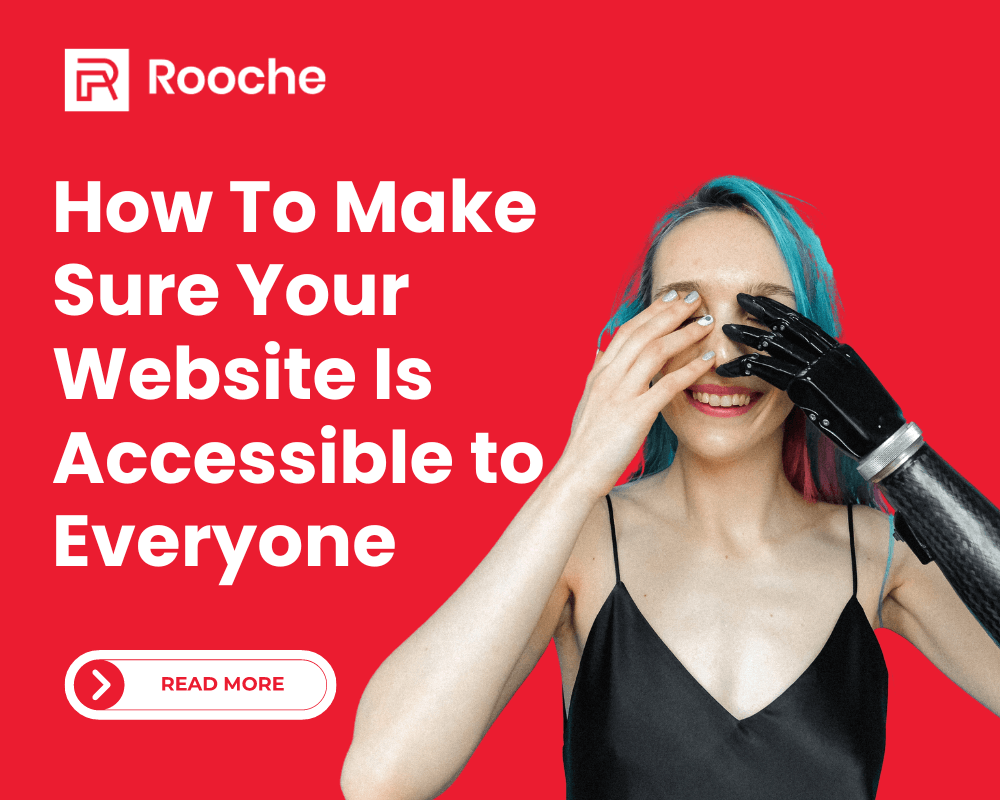10 Tips for Mobile App Design for Ecommerce Stores
Mobile users spend more time on apps than ever before. Also, the market for mobile e-commerce apps is growing at […]
Dec 8, 2022
Dec 8, 2022

Accessibility is important for your website visitors for a number of reasons. People with disabilities may not be able to use your site if it’s not accessible, and web crawlers may have difficulty indexing your content if your site is not built correctly. In addition, an accessible website is more likely to be used by everyone, including people with disabilities, which can increase your audience and potential customer base.
There are a number of reasons why web accessibility is important:
There are a few key things to keep in mind when you’re developing your website to make sure it’s accessible to everyone.
If you have any videos or audio files on your website, it’s important to include captions and transcripts so that people who are deaf or hard of hearing can still access your content. You should also provide a link to a transcript or caption file for each multimedia element on your site.
Web standards are the guidelines for how web pages should be coded and designed. By using web standards, you can make sure your site will work on all web browsers and devices. In addition, web standards can make your site more accessible to people with disabilities.
There are a few web standards that you should keep in mind when designing your website:
What is concise language means?
Concise language means using as few words as possible to convey your meaning. When you’re writing for the web, it’s important to be concise so that your readers can easily understand what you’re saying.
The language on your website should be easy to understand. Use simple words and phrases, and avoid jargon. You should also provide alternate text for images so that people who are blind or have low vision can still understand your content.
Your website should be easy to read, with clear headings and a consistent layout. Use fonts that are easy to read, and make sure the text is a contrast to the background color. You should also provide enough space between lines of text.
Images should include alternative text (ALT text) so that people who are blind or have low vision can still understand your content. The ALT text should be a brief description of the image.
If you have any complex topics on your website, provide links to more information so that people can get the information they need. You should also provide a link to your privacy policy and terms of use.
It’s important to test your website on different web browsers and devices to make sure it works correctly. You can use a web browser simulator to test how your site looks on different browsers. In addition, you should test your site on a mobile device
Your website code should be clear and simple. This will make it easier for web crawlers to index your site, and it will also make your site more accessible to people with disabilities. In addition, a well-coded site is more likely to work on all web browsers and devices.
There you have it! A few tips on how to make sure your website is accessible to everyone. By following these guidelines, you can make sure that your site can be used by everyone, including people with disabilities. Do you have any other tips on how to make a website accessible? Share them in the comments below!

Mobile users spend more time on apps than ever before. Also, the market for mobile e-commerce apps is growing at […]
Dec 8, 2022

Are you looking for ways to promote your website on social media? You’re in luck! We’ve got the perfect guide […]
Apr 13, 2023

Web Design Backgrounds Backgrounds are an essential design element, but many people overlook them. When designing a website, most people’s […]
Dec 8, 2022
Join our newsletter and be the first to receive future promo and sale updates from Rooche!